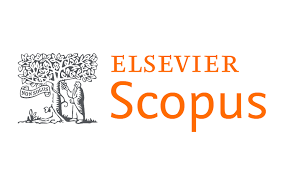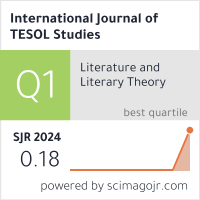2632-6779 (Print)
2633-6898 (Online)


Scopus
Ulrich’s Periodicals Directory (ProQuest)
MLA International Bibliography
MLA Directory of Periodicals
Directory of Open Access Journals (DOAJ)
QOAM (Quality Open Access Market)
British National Bibliography
WAC Clearinghouse Journal Listings
EBSCO Education
ICI Journals Master List
ERIH PLUS
CNKI Scholar
Gale-Cengage
WorldCat
Crossref
Baidu Scholar
British Library
J-Gate
ROAD
BASE
Publons
Google Scholar
Semantic Scholar
ORE Directory
TIRF
China National Center for Philosophy and Social Sciences Documentation
Alejandra Montero-SaizAja
University of La Rioja, Spain
Abstract
The present study seeks to fulfill the following three objectives: (1) to examine the controlled productive vocabulary of unimodal EFL learners, (2) to identify their perceptual learning style preferences, and (3) to determine whether the major preference for a specific perceptual learning style ensures a higher controlled productive vocabulary. The sample of the present study comprised 36 unimodal EFL learners who were enrolled in the 12th grade in the Spanish educational system. Two data collection instruments were administered. The 2,000-word parallel version (version A + version C) of the Productive Vocabulary Levels Test (Laufer & Nation, 1995, 1999) was used to obtain the controlled productive vocabulary knowledge of the participants. The Learning Style Survey (Cohen et al., 2009) was used to assess their perceptual learning style preferences (visual, auditory, and tactile/kinesthetic). Findings revealed that the informants had an overall controlled productive vocabulary knowledge of 948 words, out of the 2,000 most frequent words that the test measured. Visual appeared to be the most favored perceptual learning style, followed by tactile/kinesthetic and auditory styles. Similarly, visual learners were reported to have a larger productive vocabulary knowledge, followed by tactile/kinesthetic and auditory learners. Nevertheless, the results indicated that there were not statistically significant differences among controlled productive vocabulary knowledge and each perceptual learning style preference. These findings are suggestive of the need for further instruction on EFL vocabulary in the Spanish educational system so that learners would be able to communicate effectively both orally and in written form in English.
Keywords
Controlled productive vocabulary, perceptual learning style preferences, English as a foreign language, 12th grade, Spanish educational system